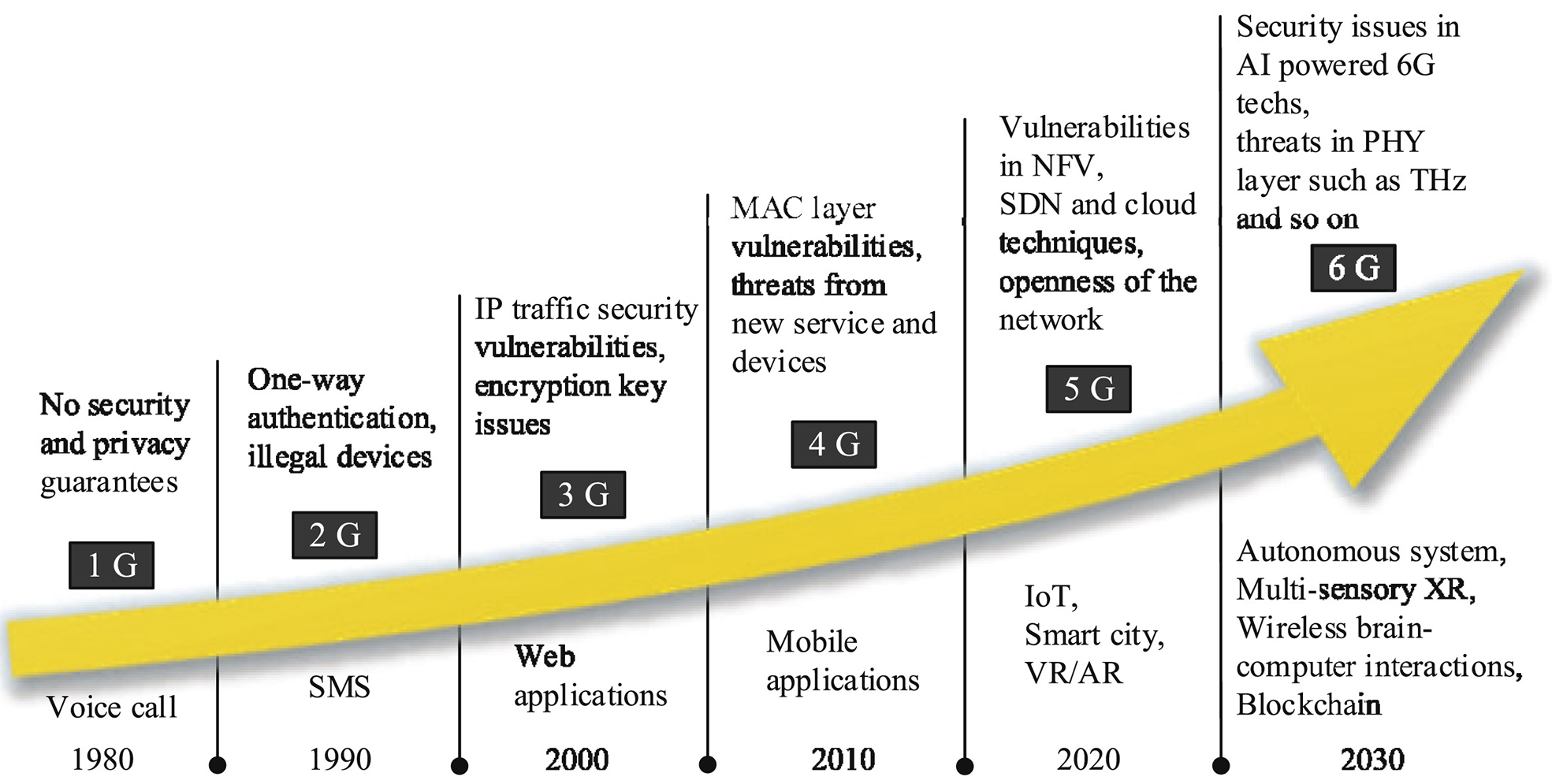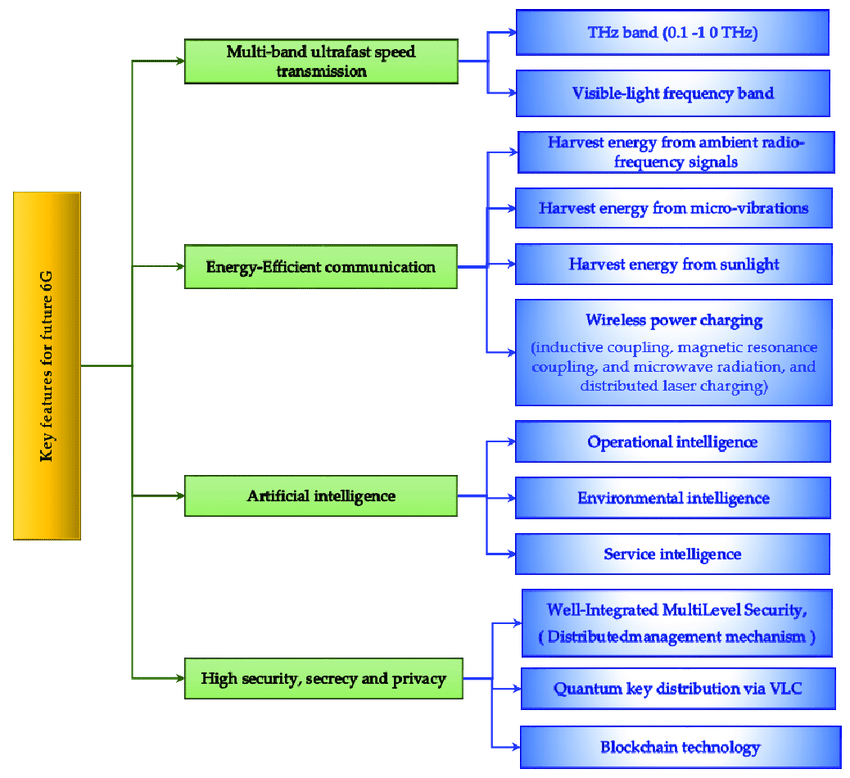6G Technology
Why in News
Recently, the government has asked the Centre for Development of Telematics (C-DOT) to begin developing 6G and other futuristic technologies to catch up with the global market in time.
- The next generation telecom technology (6G) is said to be 50 times faster than 5G and is expected to be commercially launched between 2028-2030.
Key Points
- About:
- 6G (sixth-generation wireless) is the successor to 5G cellular technology.
- It will be able to use higher frequencies than 5G networks and provide substantially higher capacity and much lower latency (delay).
- One of the goals of 6G internet will be to support one microsecond-latency communication (delay of one-microsecond in communication).
- This is 1,000 times faster - or 1/1000th the latency - than one millisecond throughput.
- It seeks to utilize the terahertz band of frequency which is currently unutilized.
- Terahertz waves fall between infrared waves and microwaves on the electromagnetic spectrum.
- These waves are extremely tiny and fragile, but there's a huge amount of free spectrum up there that would allow for spectacular data rates.
- Significance:
- More facilitation:
- The 6G technology market is expected to facilitate large improvements in imaging, presence technology and location awareness.
- 6G's higher frequencies will enable much faster sampling rates, in addition to providing significantly better throughput and higher data rates.
- Advancement in Wireless sensing technology:
- The combination of sub-mm waves (e.g., wavelengths smaller than one millimeter) and frequency selectivity to determine relative electromagnetic absorption rates could potentially lead to significant advances in wireless sensing technology.
- Emergence of Digital Capabilities:
- It will see the emergence of simple, easy-to-wear-and-carry devices with a huge set of digital capabilities.
- This will help the paramedics, educators and agro-technicians to jumpstart the village ecosystems with little or limited need for on-site presence of doctors, professors and agro-experts.
- Optimising mass public transportation:
- For India, such an enabling set of technologies will bring manifold utilisation of scarce rail, air and road networks and make mass transportation far more efficient; Artificial Intelligence (AI) and massively parallel computing architectures will help solve transportation and scheduling operations research problems.
- More facilitation:
- Challenges:
- Maintaining Protection Mechanisms:
- The key technical challenges are energy efficiency, avoiding signal attenuation due to obstructions and water droplets in the air, and, of course, maintaining end-to-end trust through robust cyber security and data protection mechanisms.
- Adoption of New Models:
- Need innovations in antenna design, miniaturisation, edge cloud and distributed AI models. In addition, we need to ensure end-to-end security and privacy by design, instead of as an afterthought.
- Availability of Semiconductor:
- We don't have semiconducting materials that can use multi-THz frequencies. Getting any kind of range out of those frequencies may require enormous arrays of extremely tiny antennas.
- Complex Design for Carrier Wave:
- Water vapor in the atmosphere blocks and reflects THz waves, so mathematicians will have to design models that allow data to take very complex routes to its destination.
- Maintaining Protection Mechanisms:
Centre for Development of Telematics (C-DOT)
- It was established in 1984. It is an autonomous Telecom R&D (Research and Development) centre of DoT (Department of Telecom), Ministry of Communications.
- It is a registered society under the Societies Registration Act,1860.
- It is a registered public-funded research institution with the Department of Scientific and Industrial Research (DSIR), Ministry of Science &Technology.
- Currently, C-DOT is working towards realising the objective of various flagship programmes of Govt. of India which include Digital India, BharatNet, Smart Cities etc.
Way Forward
- Government should indicate the intention for pursuit of 6G by announcing a long-term vision, a multi-year (multi-decade) plan, strong investments, and minimal bureaucracy.
- Government needs to execute the new electronics manufacturing policy as stated in the India Trillion Dollar Digital Opportunity document (2019) of the Ministry of Electronics and IT.
- Not just providing leadership for the Googles and Microsofts of the world, but creating them in our own Indian innovation eco system based on the strong foundation of ‘Talent, Technology and Trust’, is imperative.
- India needs to replicate the space and nuclear technologies mission experience which achieved self-reliance and self-confidence or Atmanirbharta. Technology leadership for a better world should be our gift to the world and to ourselves. Leadership in 6G may be the best way to celebrate 2047, our centenary of Independence.

